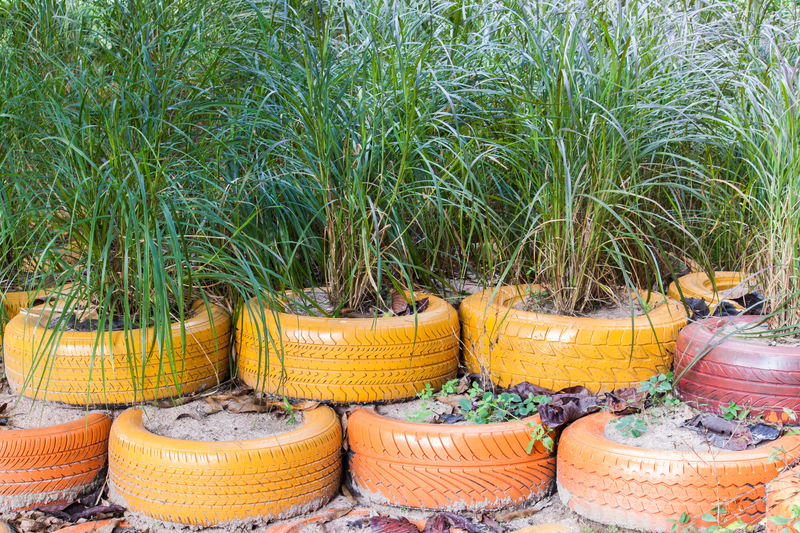Streamline Your Living Space with Regular Clutter Control: The Ultimate Guide
In today's fast-paced world, keeping your living space organized isn't just about aesthetics--it's about enhancing your quality of life. Regular clutter control is the key to achieving a neat, peaceful, and functional home. This comprehensive article explores practical strategies and actionable tips to help you streamline your living space, boost productivity, and foster a tranquil environment.

Why is Clutter Control Essential?
Clutter accumulates quietly and quickly. You may not notice the impact at first, but over time, piles of unnecessary items can generate stress, reduce focus, and undermine your well-being. Maintaining a clutter-free home not only makes your environment more inviting, but it also saves you time, cuts costs, and allows for daily efficiency.
The Psychological Benefits of a Tidy Space
- Reduces Stress: Studies hint at a direct correlation between organized spaces and lowered anxiety levels.
- Improves Concentration: A mess-free area helps you focus more easily on tasks.
- Cultivates Relaxation: Coming home to a clean, uncluttered space fosters a sense of peace and relaxation.
The Principles of Streamlining Your Living Space
Embracing clutter management as a lifestyle habit involves more than a one-off cleaning spree. To efficiently streamline your residence, it's essential to adopt regular practices and embrace minimalist thinking without sacrificing comfort or personal style.
1. Adopt the "One In, One Out" Rule
For every new item you introduce into your home, make a deliberate effort to remove one that's no longer needed. This simple habit keeps the volume of your belongings in balance and encourages you to think twice before making new purchases.
2. Schedule Regular Decluttering Sessions
Clutter control works best when it becomes a consistent habit. Whether it's daily, weekly, or monthly, choose a schedule that works for you and stick to it. Regular reviews of your living space help prevent overwhelming messes from accumulating.
3. Embrace Functional Storage Solutions
Invest in furniture with built-in storage, use baskets or boxes for grouping similar items, and maximize vertical space with shelves. Efficient storage makes it easier to organize and reduces the temptation to let things pile up.
4. Designate Zones for Common Items
Assign specific places for commonly used items--keys, mail, shoes, and electronics. This habit keeps surfaces clear and makes finding things a breeze, streamlining your daily routines.
5. Purge Sentimentally--But Objectively
It's easy to form emotional attachments to belongings, but regularly assess keepsakes with a critical eye. Save what's meaningful, but don't let nostalgia override practicality. Donate, recycle, or discard items that no longer serve you.
Streamline Your Living Space: Step-by-Step Action Plan
Ready to begin your journey to a more organized home? Here is a structured approach to regular clutter control that you can follow, regardless of home size or lifestyle.
Step 1: Visual Assessment and Goal Setting
Walk through each room and identify clutter hotspots. Make a list of target areas--these could be overflowing closets, a chaotic kitchen counter, or a crowded entryway. Set clear, achievable goals for each space, such as "clear off all visible surfaces" or "reduce wardrobe by 25%."
Step 2: Categorize Items
Divide your belongings into the following categories:
- Keep: Items you use regularly or genuinely love.
- Relocate: Items that belong elsewhere in your home.
- Donate/Sell: Items in good condition but no longer needed.
- Recycle/Dispose: Broken or unusable items.
Step 3: Create a System for Maintenance
Now that areas are decluttered, maintain this state by:
- Performing quick daily tidy-ups--return items to designated spots.
- Setting aside 10-15 minutes each week for a clutter check-in.
- Promptly dealing with incoming items (mail, packages, receipts).
Step 4: Implement Smart Storage
Choose storage solutions that fit your lifestyle. For example:
- Add under-bed organizers in bedrooms for seasonal items.
- Install hooks and wall shelves for vertical storage in entryways and bathrooms.
- Use clear containers to make stored contents visible and accessible.
Tip: Label containers and baskets for quick identification.
Step 5: Establish an Ongoing Clutter Control Routine
Effective streamlining of your living space relies on consistency. Put reminders in your calendar and involve the household in shared spaces. Celebrate small wins to stay motivated.
Room-by-Room Decluttering Strategies
Living Room
- Keep surfaces like coffee tables and end tables mostly clear.
- Use baskets for remote controls, magazines, or toys.
- Rotate decorative items seasonally to keep things fresh and uncluttered.
Kitchen and Dining Area
- Declutter countertops--store appliances used less often in cabinets.
- Organize pantry items by category and expiration date.
- Keep only daily-use dishes and glassware accessible; store or donate the rest.
Bedroom
- Limit items on bedside tables to essentials.
- Purge wardrobe regularly; donate clothes you haven't worn in the past year.
- Consider a "capsule wardrobe" approach to reduce clothing clutter.
Bathroom
- Use small bins or shelves for toiletries.
- Regularly toss expired or unused products.
- Implement drawer dividers for makeup and grooming tools.
Entryway
- Add a small table or tray for incoming mail and keys.
- Install wall hooks or a coat rack for bags and outerwear.
- Store shoes in a designated rack or basket to keep floors clear.
Overcoming Common Challenges
What If You Feel Overwhelmed?
Tackling a cluttered home can feel daunting. Start with small, manageable projects--such as one drawer or shelf--and build momentum. Enlist a friend or family member for support and accountability.
Dealing with Sentimental Clutter
Sentimental items can be the hardest to part with. Consider:
- Keeping one piece from a collection and letting go of the rest.
- Taking photos of items before donating or discarding them to preserve memories.
- Digitizing memorabilia--scanning old cards, letters, or photos for digital storage.
Handling Clutter in a Household with Multiple People
- Establish shared ground rules for what constitutes clutter.
- Hold regular family meetings to discuss organization goals and listen to everyone's needs.
- Assign each person certain responsibilities for shared spaces.
Benefits of Regular Clutter Control and Living Space Streamlining
- Maximized Usable Space: More room for enjoying hobbies, entertaining, or relaxing.
- Time and Money Savings: Less time spent searching for lost items or making unnecessary purchases.
- Healthier Environment: Reduced dust and allergens in consistently tidy spaces.
- Improved Mood: A clean space promotes positivity and well-being.

Clutter Control Tools and Resources
If you're ready to streamline your home, consider incorporating these tools and tips into your routine:
- Donation bins: Keep a designated basket for items to donate, and drop off weekly or monthly.
- Decluttering apps: Use apps to track decluttering progress and set reminders (e.g., Tody, Sortly).
- Professional organizers: For big projects, hire a certified organizer to get expert guidance.
- Storage upgrades: Invest in multi-purpose furniture and customizable closet systems.
Conclusion: Transform Your Home with Consistent Clutter Management
Embracing regular clutter control offers lasting improvements in your home's functionality and your overall well-being. By scheduling periodic checks, investing in functional storage, and motivating everyone in your household, you can streamline your living space into an efficient, beautiful, and stress-free sanctuary. Remember, the journey to an organized home is ongoing--start small, celebrate progress, and keep your sights set on your long-term vision for a calm and clutter-free lifestyle.
Ready to transform your living environment? Start your clutter control journey today and enjoy the benefits of a truly streamlined space!